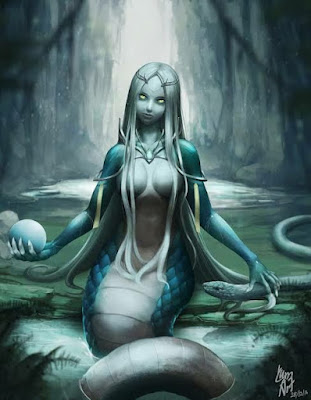Echidna was a half-woman, half-snake creature in Greek mythology, also known as the "mother of all monsters", as she gave birth to most of the Greek mythical creatures. She was the wife of Typhon, who was the "father of all monsters" and the most fearsome and dangerous monster in said mythology. Both she and her husband were the children of Gaia and Tartarus. The couple attacked the Olympians, but Zeus managed to repel them, burying Typhon under Mount Etna; Echidna and her children were spared to continue challenging future heroes. Echidna was killed by Argus Panoptes while sleeping.
Some of the most famous children of Echidna and Typhon were Cerberus, the three-headed hound who guarded the gates of the Underworld; the Lernaean Hydra, the multi-headed serpent that grew two heads if one was cut off; the Gorgon sisters, the best known being Medusa; and the Chimera, a creature that had the heads of a lion, a goat and snake.

Comments
Post a Comment